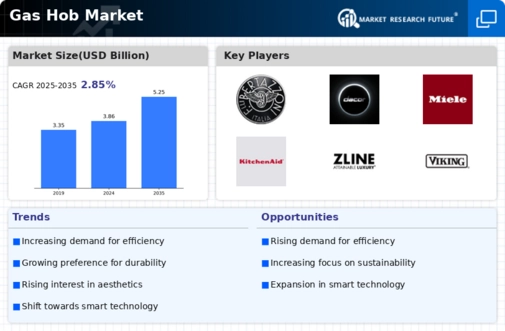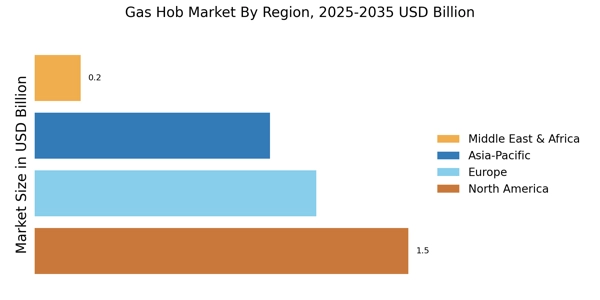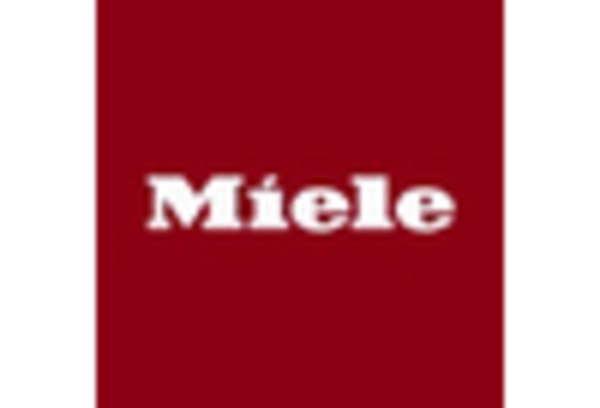Growing Culinary Enthusiasm Among Consumers
The Gas Hob Market benefits from a growing culinary enthusiasm among consumers, particularly in urban areas. As more individuals take an interest in cooking and gourmet food preparation, the demand for high-quality cooking appliances rises. Gas hobs are often favored by professional chefs and home cooks alike for their precise heat control and instant flame response. This trend is supported by Market Research Future indicating that the premium segment of gas hobs is projected to grow at a compound annual growth rate of 15% over the next few years. As culinary enthusiasts seek to replicate restaurant-quality dishes at home, the Gas Hob Market is poised for expansion.
Regulatory Support for Clean Energy Solutions
Regulatory support for clean energy solutions significantly influences the Gas Hob Market. Governments worldwide are implementing policies aimed at reducing carbon emissions and promoting cleaner energy sources. This regulatory environment encourages manufacturers to innovate and produce gas hobs that comply with stringent environmental standards. For instance, certain regions are offering incentives for consumers who purchase energy-efficient appliances, including gas hobs. Market analysis suggests that such policies could lead to a 20% increase in the adoption of compliant gas hobs over the next few years. Consequently, the Gas Hob Market stands to benefit from these regulatory frameworks that promote sustainable cooking solutions.
Rising Demand for Energy-Efficient Appliances
The Gas Hob Market experiences a notable increase in demand for energy-efficient appliances. Consumers are increasingly aware of energy consumption and its impact on utility bills and the environment. As a result, manufacturers are focusing on developing gas hobs that offer higher efficiency ratings. According to recent data, energy-efficient gas hobs can reduce energy consumption by up to 30% compared to traditional models. This shift towards energy efficiency not only appeals to environmentally conscious consumers but also aligns with government initiatives promoting sustainable living. Consequently, the Gas Hob Market is likely to witness a surge in sales as more households opt for energy-efficient cooking solutions.
Increased Renovation and Remodeling Activities
The Gas Hob Market is experiencing growth due to increased renovation and remodeling activities in residential properties. Homeowners are investing in modernizing their kitchens, which often includes upgrading to more efficient and aesthetically pleasing gas hobs. According to industry reports, kitchen renovations account for a significant portion of home improvement expenditures, with gas hobs being a focal point of these upgrades. This trend is further fueled by the rise in disposable income and changing lifestyle preferences, leading to a greater willingness to invest in high-quality kitchen appliances. As a result, the Gas Hob Market is likely to see a sustained increase in demand as more consumers undertake kitchen renovations.
Technological Advancements in Cooking Solutions
Technological advancements play a pivotal role in shaping the Gas Hob Market. Innovations such as automatic ignition systems, flame failure safety devices, and precise temperature control mechanisms enhance user experience and safety. Furthermore, the integration of smart technology allows users to control their gas hobs remotely via mobile applications. This trend is particularly appealing to tech-savvy consumers who prioritize convenience and efficiency in their cooking processes. Market data indicates that the adoption of smart gas hobs is expected to grow by approximately 25% over the next five years, reflecting a significant shift in consumer preferences within the Gas Hob Market.


















Leave a Comment